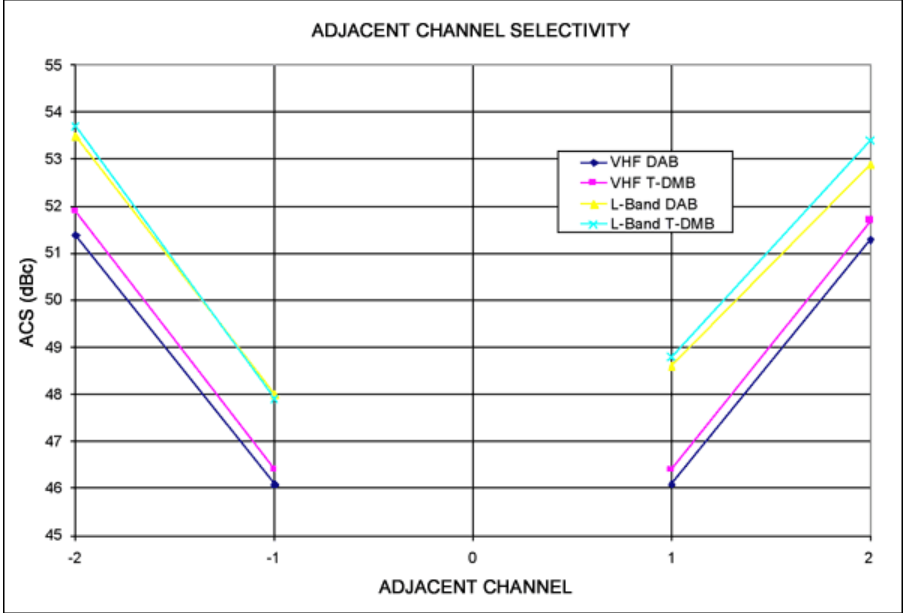The MAX2170/MAX2171 low-IF tuner is designed for Digital Audio Broadcast (DAB) and Terrestrial Digital Multimedia Broadcast (T-DMB) applications, covering an input frequency range of 168MHz to 240MHz (VHF-III) and 1452MHz to 1492MHz (L-band). The MAX2170/MAX2171 achieve a high level of component integration, thus allowing low-power, tuner-on-board designs. The low-IF architecture eliminates the need for an IF-SAW filter, while providing a balanced 2.048MHz center frequency baseband output to the demodulator. The MAX2170 provides a buffered reference clock at the crystal frequency, while the MAX2171 outputs a reference at 1/3rd of the crystal frequency. A sigma-delta fractional-N synthesizer is incorporated to optimize both close-in and wideband phase-noise performances for OFDM applications where sensitivity to both 1kHz phase noise and wideband phase noise related to strong adjacents can be a problem.

Figure 1. The MAX2170/MAX2171 tuner plus demodulator reference design

Figure 2. System Block Diagram

Figure 3. The VHF sensitivity measures better than -100.9dBm for DAB and better than -101.3dBm for T-DMB

Figure 4. The L-Band sensitivity measures better than -100.6dBm for DAB and better than -100.7dBm for T-DMB

Figure 5. The Adjacent Channel Selectivity (ACS) is better than 46dBc at the N±1 adjacents for VHF, and improves by almost 2dB for L-band. With these ACS measurements, the desired signal is at -70dBm and 206.352MHz for VHF and 1471.792MHz for L-band. The channel spacing is 1.712MHz.
Additional Measurements
The maximum input level is 10dBm for DAB and T-DMB in both VHF and L-band. This input level is limited by the absolute maximum rating of the MAX2170/MAX2171 devices.
| Parameter | Conditions | Measured | Units |
| Maximum Input | VHF: 174.928, 206.352, 239,200MHz | 10, 10, 10 | dBm |
| Maximum Input | L-Band: 1452.960, 1471.792, 1490.624MHz | 10, 10, 10 | dBm |
| Far-Off Selectivity, VHF (Desired: -70dBm, 206.352MHZ) | N+5MHz FM Adj N-5MHz FM Adj |
66.7 66.6 |
dBc |
| Far-Off Selectivity, L-Band (Desired: -70dBm, 1471.792MHZ) | N+5MHz FM Adj N-5MHz FM Adj |
67.0 66.9 |
dBc |
| Parameter | Conditions | Measured | Units |
| Maximum Input | VHF: 174.928, 206.352, 239,200MHz | 10, 10, 10 | dBm |
| Maximum Input | L-Band: 1452.960, 1471.792, 1490.624MHz | 10, 10, 10 | dBm |
| Far-Off Selectivity, VHF (Desired: -70dBm, 206.352MHz) | N+5MHz FM Adj N-5MHz FM Adj |
67.0 66.9 |
dBc |
| Far-Off Selectivity, L-Band (Desired: -70dBm, 1471.792MHz) | N+5MHz FM Adj N-5MHz FM Adj |
67.0 66.9 |
dBc |
DAB/T-DMB Frequency Plan

Figure 6. The DAB/T-DMB RF signal is typically broadcast in the VHF-III band and L-band. The channel spacing is typically 1.712MHz with 1.536MHz signal bandwidth




















